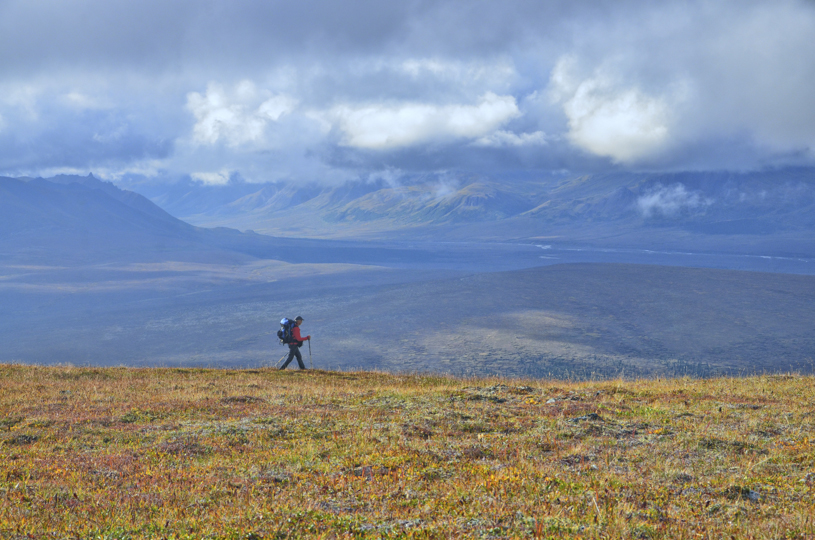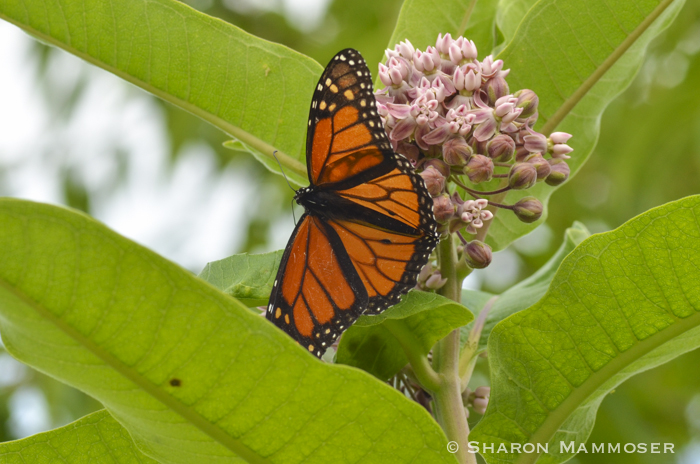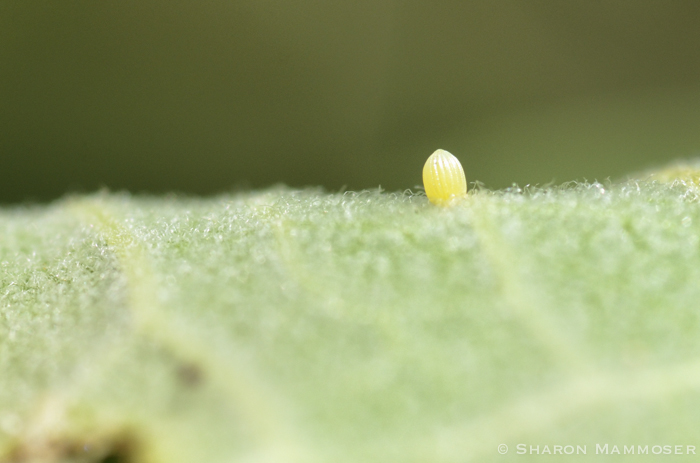 So did you have a guess for last week’s puzzler? I suspect you knew it was an egg from a small creature, right? The hint was that the egg was on Milkweed.
So did you have a guess for last week’s puzzler? I suspect you knew it was an egg from a small creature, right? The hint was that the egg was on Milkweed.
This happens to be the ONLY plant that the Monarch butterfly caterpillar eats. Yes, it’s a MONARCH BUTTERFLY EGG!
It will hatch into a tiny caterpillar that, like all caterpillars, will be an eating machine. Eat, eat, eat. (Poop, poop, poop…)Until it is big enough to make its chrysalis. And then become an adult butterfly.
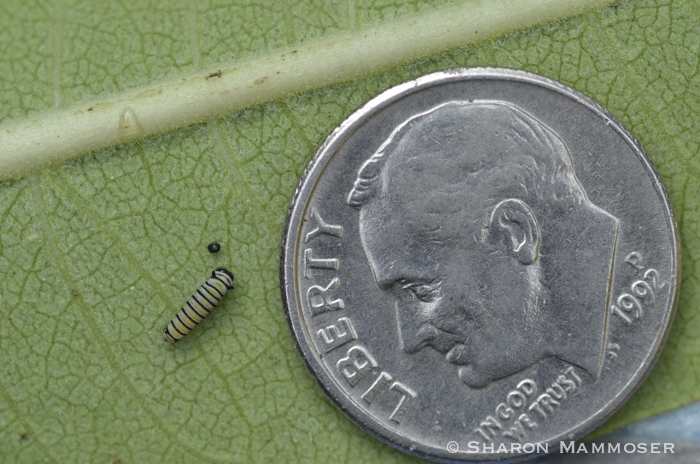
You may or may know know that in recent years the population of Monarch butterflies is down 90%. Yes, you read that right–it is down a staggering 90%! (Read more HERE OR here.) Monarch butterflies that live east of the Rocky Mountains migrate each fall to Mexico where they spend the entire winter, gathered on a special type of fir tree that lives there. Several years ago I was lucky enough to visit one of these Monarch butterfly reserves and witness this incredible part of their migration.
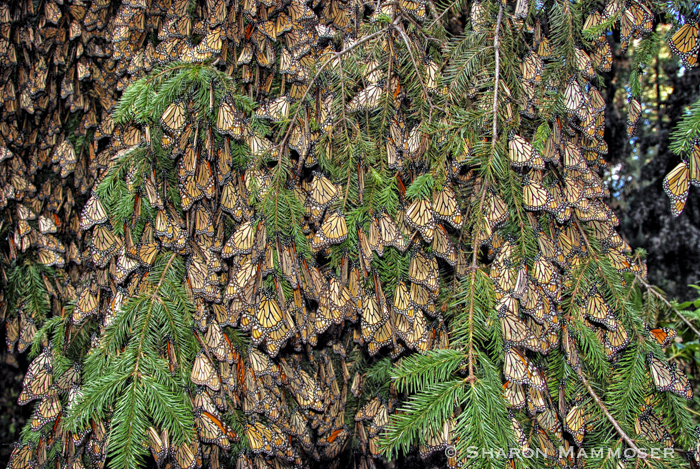
Twenty years ago there were nearly 20 million Monarchs! Covering a whopping 40 acres of land. Two years ago, the numbers were at an all-time low, covering just under 2 acres of land.
As with all things in nature, many factors come into play here, but at the top of the list is a severe shortage of the ONLY PLANT THE CATERPILLARS EAT–Milkweed.
Without Milkweed, the caterpillars will not become butterflies.
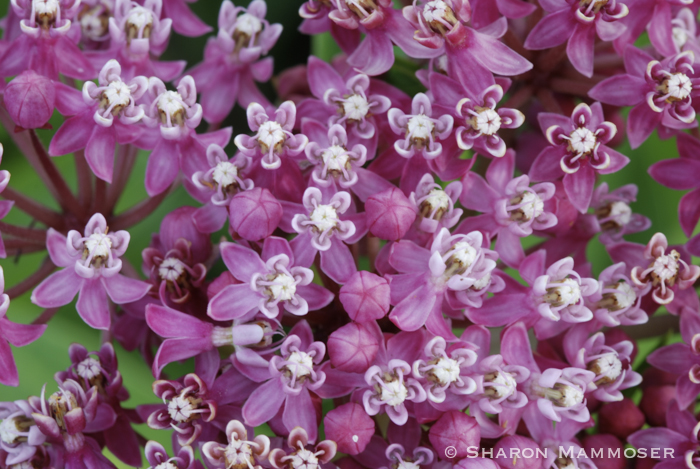
If I could I would change the name of this plant because I think it is one of the problems. People hear the word WEED and automatically think GET RID OF IT or kill it. Everyone knows weeds are unwanted. But to me and many others, a weed is just a plant growing where it doesn’t belong and many “weeds” are wonderful plants that attract butterflies and even hummingbirds.
I wish I had a way of capturing the wonderful fragrance of blooming Milkweed. It truly is heavenly!
I love to stand in a field of Milkweed and breathe it in. But even though I may be a skilled photographer, able to capture beauty in nature, I cannot think of a way to convey to you the smell of a blooming Milkweed. Maybe think of Lily of the Valley and Lilacs—only WAY better!
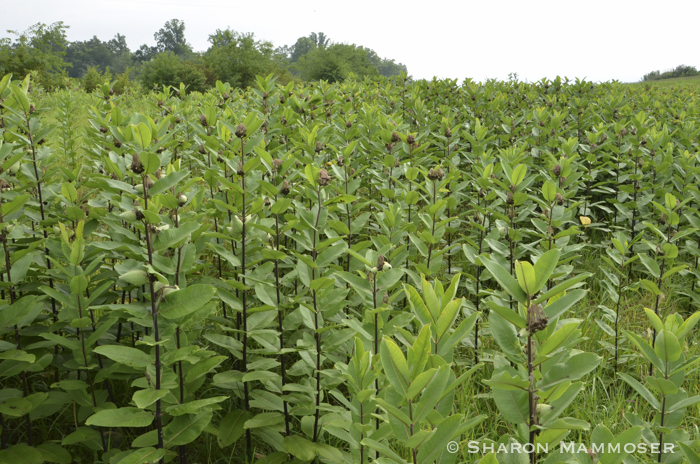
In the United States we are losing a MILLION acres of Milkweed every year! And for the Monarch butterfly this is really bad. Much of the immense croplands in the middle US are now genetically modified, allowing them to be “roundup ready.” This means the farmers can use Roundup liberally and it won’t affect their crops, but for the Milkweed, it means death. Our native Milkweed cannot withstand Roundup and so is no longer growing beside farmer’s fields, along roads, in fields where it used to be common.
And if it DOES grow in a field somewhere, it seems inevitably that someone comes along on a tractor and mows the field for hay or just because and so all of the Monarch eggs and caterpillars using the Milkweed never finish out their lifecycle to become adults.
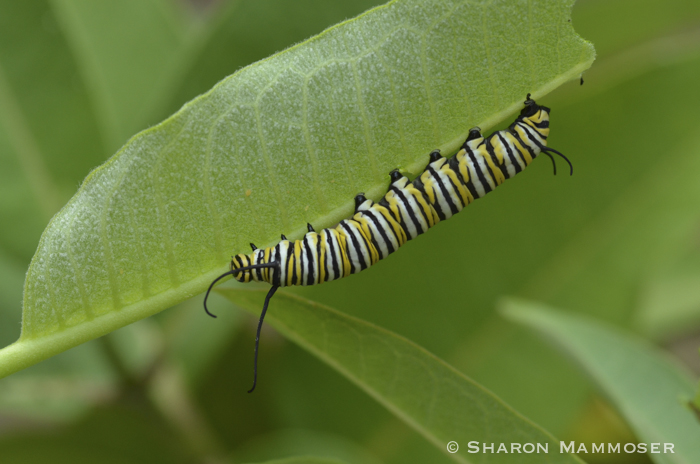 I have taken to raising the caterpillars at my home, saving the eggs from the fields that I suspect will soon be mowed. When possible I try to talk with the owners and convince them to hold off on mowing until late October when the last of the Monarchs have become butterflies and set off for Mexico. It is a never-ending battle but one that for me, is essential. I love and appreciate the Monarch butterflies too much to just sit back and watch their demise.
I have taken to raising the caterpillars at my home, saving the eggs from the fields that I suspect will soon be mowed. When possible I try to talk with the owners and convince them to hold off on mowing until late October when the last of the Monarchs have become butterflies and set off for Mexico. It is a never-ending battle but one that for me, is essential. I love and appreciate the Monarch butterflies too much to just sit back and watch their demise.
If you want to learn more about what you can to to help the Monarchs, CLICK HERE.
I recently watched one of the caterpillars I am raising grow and grow and grow… and then make its chrysalis. This WAS AMAZING, nothing short of miraculous. I made a video of it and will post it next week, (Guaranteed to make you smile and shake your head in amazement!) along with some more amazing facts about this butterfly. Until then, here’s the next puzzler, and have a wonderful weekend!

